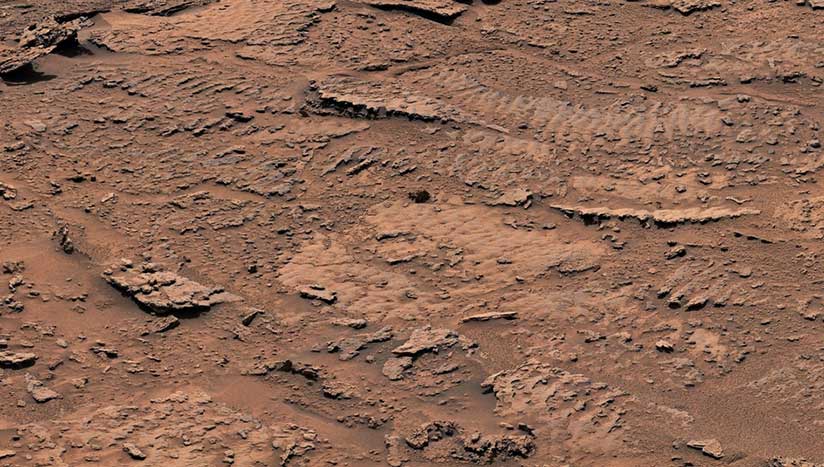NASA’s Curiosity rover has found the strongest evidence of a prehistoric lake on Mars. The rover came atop layers of rocks with tell-tale signs of a river that flowed over them to form ripples over time. Scientists at the Jet Propulsion Laboratory in California believe the rock formation indicated a body of water that dried out over centuries on the Red Planet.

In their search for organic life on Mars, NASA’s Curiosity rover has been navigating the Martian surface since 2014 in search of life. Curiosity’s project scientist, Ashwin Vasavada, said the evidence of a lake was found in an area of Mars that was expected to be dry and arid. He disclosed that this is the first time NASA scientists would obtain a strong indication of a dried lake in space.
“This is the best evidence of water and waves that we’ve seen in the entire mission,” said Ashwin Vasavada. “We climbed through thousands of feet of lake deposits and never saw evidence like this — and now we found it in a place we expected to be dry.”
The proof of a prehistoric river on Mars was found in the “sulfate-bearing unit” which is rich in salty mineral deposits under Mount Sharp mountain. NASA experts said the rover came across the patch of water-dried rocks as the machine slowly inches its way up the rocky surface of the mountain. According to them, “billions of years ago, waves on the surface of a shallow lake stirred up sediment at the lake bottom, over time creating rippled textures left in the rock.”
Evidence of rocks that formed in recent centuries was found in the Marker Band Valley, which has a darker coloration that enabled it to stand out against its zigzag landscape. The rover tried on two different occasions to extract soil or rock samples from the area, but the machine’s drill could not obtain the samples because the rocky ground was too hard. The rover operators aim to try to drill again for samples in the next few weeks if the machine comes to a softer parcel of ground.
“The wave ripples, debris flows, and rhythmic layers all tell us that the story of wet-to-dry on Mars wasn’t simple,” Vasavada said. “Mars’ ancient climate had a wonderful complexity to it, much like Earth’s.”
